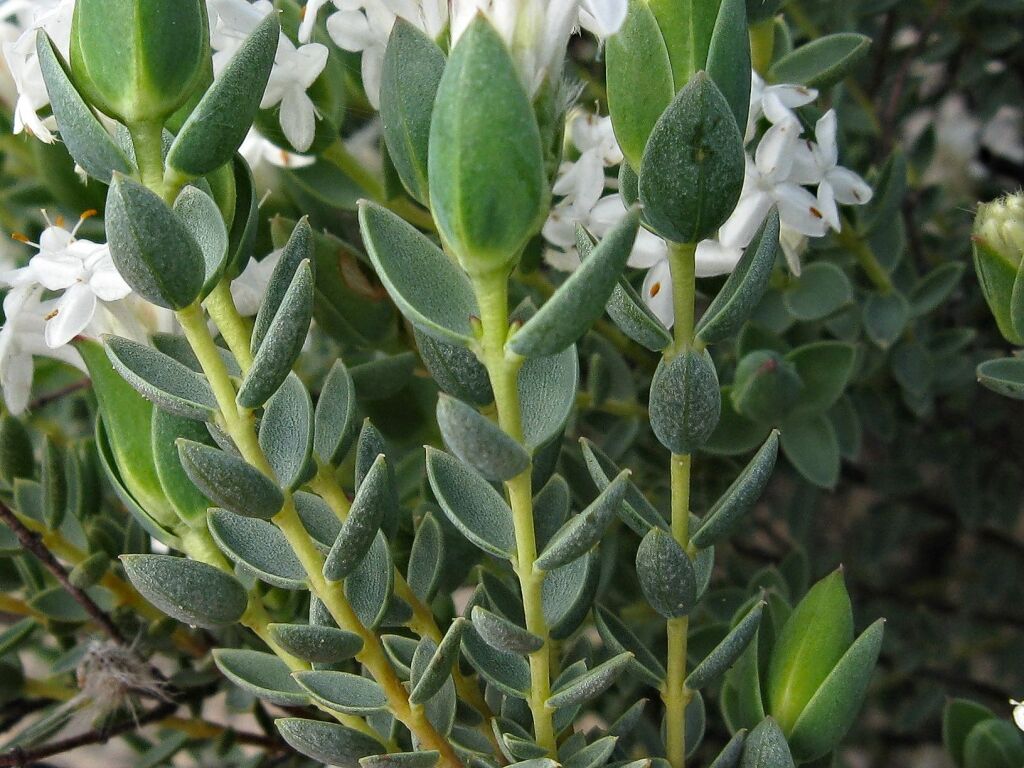Pimelea glauca
R.Br. Smooth Rice-flowerShrub to 1 m high; stems glabrous; nodes prominent. Leaves opposite, shortly petiolate, usually narrowly elliptic, 3–15 mm long, 1–6 mm wide, concolorous, usually bluish-green, glabrous; apex deflexed-mucronate. Inflorescence terminal, usually erect, a 7–many-flowered head; involucral bracts 4, sessile, more or less ovate, 6–16 mm long, 2–8 mm wide, glabrous outside, green; inner pair of bracts hairy inside, fringed. Flowers bisexual, glabrous inside, white or creamy white; floral tube 8–14 mm long, ovary-portion glabrous, style-portion longer than ovary-portion, with short hairs outside, circumscissile above ovary; sepals spreading, 2–4 mm long, glabrous inside; pedicel hairy; stamens shorter than sepals; anthers opening laterally; style exserted. Fruit dry, enclosed. Flowers mainly spring.
LoM, MuM, Wim, GleP, Brid, VVP, VRiv, GipP, OtP, WaP, Gold, CVU, GGr, DunT, NIS, EGL, EGU, WPro, HSF, HNF, OtR, Strz, MonT, VAlp. Also SA, Qld, NSW, ACT, Tas. Commonly on sandy dunes or rocky areas close to coast but also widespread inland.
Characterized by the different indumentum of the inner and outer pair of involucral bracts the glabrous stems and the mucronate leaves. Although the leaves are usually stout, they can be quite narrow.
Entwisle, T.J. (1996). Thymelaeaceae. In: Walsh, N.G.; Entwisle, T.J., Flora of Victoria Vol. 3, Dicotyledons Winteraceae to Myrtaceae, pp. 912–930. Inkata Press, Melbourne.
 Spinning
Spinning


